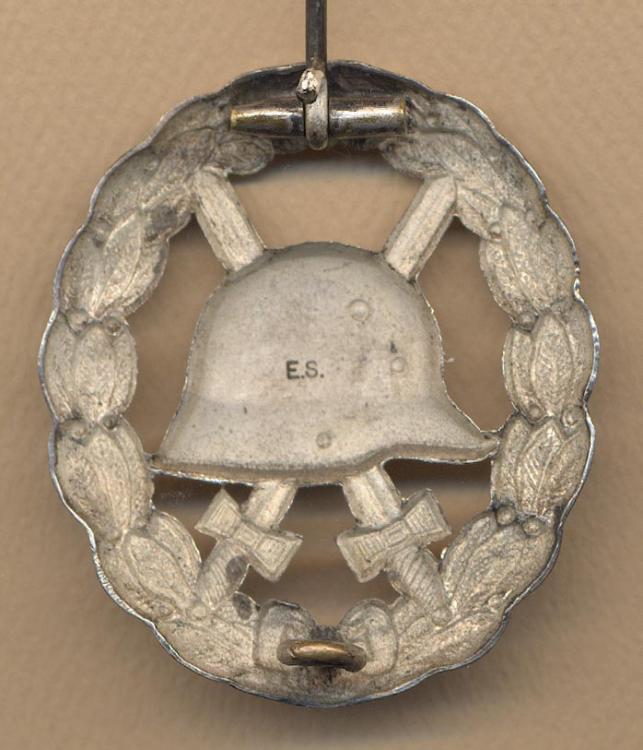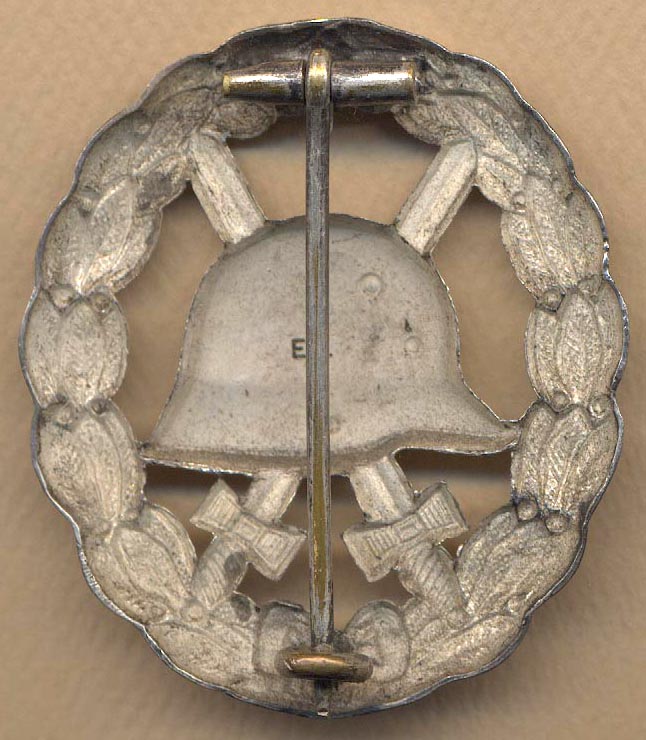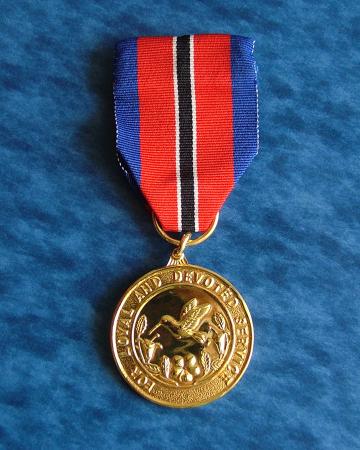
medalworld
Past Contributor-
Posts
65 -
Joined
-
Last visited
Content Type
Profiles
Forums
Blogs
Gallery
Events
Store
Everything posted by medalworld
-
China The Order of Rank and Merit: Its Origins, Classes and Recipients
medalworld replied to JapanX's topic in China
What fantastic coverage of a most interesting and rare award. It makes me wish I would have bid higher on a few of these that were in Spink sales some years ago. But I'm more intrigued right now about this comment on the Order of the White Eagle. Do you mean that only one award of that Order was ever made? Or that only one actual insignia of this order is known to be extant at this time? If the latter, are photos of that 2nd Class published anywhere? I would like to know more about this great rarity. Frank D. at medalworld -
To member Dansson, the piece seems quite genuine, but I hope you won't mind a comment about the condition of the medal. Don't be terribly disappointed if your offer is declined. The condition on this one is a bit rough, especially between the cross arms where the gilding is almost gone, and also on the swords. This is not a particularly scarce insignia. Very nice condition singles come up in auctions regularly, in the US$450-550 range. We're not exactly in a booming market these days, so with a little patience you will find a nicer piece that you'll always enjoy looking at. Condition and eye-appeal are important when you buy, because they are especially important when it's time to sell! Good luck with your collection!
-
Hello Gents, Please have a look at this Knight's Badge of the Mecklenburg Schwerin Griffin Order (obv and rev scans at 800dpi). I bought this at OMSA a half dozen or so years ago, but I've just looked closely at it today and compared details to Nimmergut's listing, his no. 1679 in vol. 2. My piece measures 46.5mm high x 43mm wide and weighs 13.7 grams. Nimmergut says Knights are 49mm x 49mm and the weight as 20.2 grams. He seems not to include the pie shaped suspension in his measurements! If his 49mm size is correct, isn't it unusual that a Knight would be larger than the Knight with Crown (his no. 1678) which he quotes as 44mm x 44mm, not including the size of the crown? Other than the size and weight, what bothers me about my piece is the pebbling within the pie shape suspension. It does not actually consist of raised dots as pebbling should be, but rather like irregular, somewhat circular, broken raised lines. If other members who are specialists in German Imperial Orders would have a look and comment, I'd be most appreciative. Many thanks, Frank D.
-
Kingdom of Iraq: Police Distinguished Service Medal
medalworld replied to Megan's topic in Middle East & Arab States
Hello All, I'm interested in buying one of these Iraqi DSMs such as shown in Megan's post above. Does anyone know how many unissued ones like this came out (or were looted) back then? Same question re: the ubiquitous bronze police medals of the same period? Thanks, Frank at medalworld (also my ebay user name) -
Hello Kharis, What a nice surprise to hear from someone who knows about Chief Inspector Edwin Kelly. I had pretty much abandoned any hope of finding out anything about him. It is a pleasure to "meet" his great grandson in this forum. When you say that you understand that CI Kelly was the first black man to reach Chief Inspector rank, do you mean in T&T only, or within the entire British Commonwealth police system? I would indeed like to know as much as possible about his career details and it would be great to acquire a nice old photo of him in uniform. You may reply to me directly at fdraskovic@hotmail.com Many thanks. Regards, Frank Draskovic
-
Many thanks Lingqi, Comments appreciated. Regards, Frank
-
Thank you Paul; your valuable comments always appreciated. In fact, I have seen this item in person and examined it closely. But as the first of this type I've seen, I cannot definitively conclude one way or another. Comparing its weight with the weight of other known originals in China and elsewhere would be helpful. The Chinese fakers are getting better at their "craft". An experienced eye can still tell obvious fakes from six feet away, such as with the large number of strange grayish metal and weirdly colored breast stars saturating the market, but some Golden Grains and Striped Tigers have caused me to look twice before recognizing they're fakes. Those are improving and one must be very careful. Nothing new under the sun here...where larceny can exist, it will. Buyer beware. Regards, Frank
-
Hello GMIC member Lingqi, Like you I've been a collector of Chinese medals for a while, 29 years for me. This is listed in Barac, but I've not seen one in person before this specimen. Based on the Ebay pics, may we have your opinion of genuineness please? Only price has been discussed here, but authenticity concerns me more. Paul, your thoughts too please? The same seller has a Tsao Kun medal for sale now also at Ebay. The reverse colors seem most unusual. Regards, Frank Draskovic
-
Generally when ones sees raised pimples, such as the two large ones on the obverse, or depressions in the fields or devices, "cast" should come to mind. Then it's time to dig out the magnifier and carefully check for other diagnostics. The extra metal on the integral loop is another tip off. In the last several years I've seen at least a dozen cast Russian China medals, mostly in silver. Fake Russian medals are ubiquitous. I now assume all are bad until very careful examination convinces me they are genuine. Buyer beware!
-
Owain, Oh well, maybe next time. There is plenty out there and always more medals to buy. I see so much coming onto the market. The auction aggregators combined send me notices of up to 50 auctions in my areas of interest, EACH DAY! One would never sleep or eat if attempting to check even a fraction of them. There is more out there than we think, and those who have it also now have the means to get it before our eyes in a professional manner. In 5-10 years we'll know what is common (likely more than we thought), scarce and what is truly rare. Regards, Frank
-
Kaisar-i-Hind Medal
medalworld replied to Ed_Haynes's topic in Great Britain: Orders, Gallantry, Campaign Medals
Hello Paul, What surprises me is that important details like exact metallic content are not clearly defined in UK ODM books such as Medal Yearbook and other earlier British medal books over the years. Can you imagine if no-one knew for sure what the gold or silver fineness was in the British coin series? Unthinkable. Regards, Frank -
Kaisar-i-Hind Medal
medalworld replied to Ed_Haynes's topic in Great Britain: Orders, Gallantry, Campaign Medals
Thank you Paul! Regards, Frank -
Kaisar-i-Hind Medal
medalworld replied to Ed_Haynes's topic in Great Britain: Orders, Gallantry, Campaign Medals
Many thanks Paul. Are the Orders of British India also .750 gold? Regards, Frank -
Hi Owain, Straying dangerous? Maybe, but fun. With a professional and collector background in world coins and paper since the early 1960s, it was natural for me to pursue the same in worldwide ODMs, especially with Bob Elliott as a mentor in the late 80s. After heavy buying, I've pulled in my horns somewhat, but still find it all interesting. Speaking of Bahawalpur, at one of earliest OMSA conventions I bought an Imtiaz-i-Haroonia neck badge from Bob Werlich. With very little experience back then, I thought I'd be finding Princely State Orders all over the place! Fat chance; that was my first and last in 28 years, but it is a beauty. I'll post it if I can figure out where to do so. It seems the moderators like to keep subjects in proper place here and that makes good sense of course. Since that purchase I bought no Bahawalpur ODMs of any kind, until just this week when I bought three medals, common ones but nice specimens, so great minds think alike! Bye for now, Frank P.S. In May 2015, I posted this at the OMSA forum... "At the March 29, 2015 Galerie De Numismatique auction in Vienna (Bogdan Stambuliu proprietor), I won one lot, an Indian Princely State of Bahawalpur neck badge of the Imtiaz Abbasia Order; see link below. http://coins-la-galerie-numismatique.com/auction-xxiv/order-imtiaziabbasia After wiring payment, I was informed by the firm that the lot had gone missing. I’d appreciate hearing from anyone who might happen to see this item, perhaps offered elsewhere. Many thanks. Frank Draskovic Should anyone have any Indian Princely State Orders or medals for sale, I’d be pleased to receive offers. Also interested in Indian table medals of the types cataloged in Puddester. Emails to: fdraskovic@hotmail.com or PM me"
-
Kaisar-i-Hind Medal
medalworld replied to Ed_Haynes's topic in Great Britain: Orders, Gallantry, Campaign Medals
Hello Ed, Such an interesting post of some years ago. Can you tell us the fineness of the gold used in this award; and also for similar solid gold issues such as the Order of British India? The silver issues are, I presume, in sterling silver, i.e., .925 fine silver? Regards, Frank Draskovic -
Hello Owain, I'm just back from a numismatic convention to find your note. I think I'll also get back to my own areas of interest, Chinese ODMs, though hardly less confusing, especially if one does not read Chinese, Life Saving awards and general world Orders. A new interest is Indian Princely States; late to the game I know as prices are up! Regards, Frank
-
Hello Owain, Your most recently pictured bronze Sierra Leone General Service Medal with QEII on obverse is cataloged in Medal Yearbook as MY-204AA. MY says it began in 1965 (four years after nominal independence in 1961). From 1961 to 1971, S.L. was a Commonwealth Realm, with the Queen as head of state, thus her effigy remained on the medals, but curiously the head of Sir Milton Margai was placed on the country's coins starting in 1964. This seems contradictory and confusing. As the Presidential Republic of Sierra Leone came about in 1971 with a new constitution, I'd guess the bronze S.L. QEII type G.S.M. became obsolete in 1971. Thus it would seem that the silver Sierra Leone LSGC medal, without the Queen's head but with "Republic" in the reverse legend, that you pictured with your 1 June 2010 post is actually a post-1971 medal. After typing all this, I just now found some posts from Emmanuel Halleaux from 2011 on this same topic. He feels the S.L. LSGC medal with Pres. Stevens on obverse predates the coat-of-arms obverse type. Perhaps the reverse might be true? Would Pres. Stevens' immediate successor after 1985 spurn the chance to have his head on a medal and instead replace it with a coat-of-arms? Also the coat-of-arms type seems to be fine silver and I wonder if silver metal was still being used in their medals in the late 80s? Just supposition of course in the absence of documentary evidence, but fun to speculate. Regards, Frank
-
Hello Owain, Your comment appreciated. Nor have I seen a QEII example mentioned anywhere. If they exist, one would think the LSGC gurus in the UK would have publicized it. But if excessively rare, one may still surface someday. So is there agreement that the coat-of-arms type in fine silver that you illustrated was in use from 1961-71? Are these at all scarce? Were issued medals named as the earlier British awards were? Regards, Frank
-
Hello, I was just reviewing these 2010 posts re: the Sierra Leone Military Forces LS&GC Medal. As there seems to have been a bit of difference of understanding as to the various types periods of use, was there ever any definitive answer as to when the 1st type obverse with coat-of-arms was issued and used? Has a post-independence QEII type obverse ever turned up? Thanks, Frank Draskovic in Calif.
-
I didn't see an answer to dante's question about a book on this subject. Yes, the title is "German Wound Badges" by William E. Hamelman, Matthaeus Publishers, Dallas, TX, undated, soft cover, 69 pages. Covers army and navy wound badges 1914-1936-1939-1944-1957; types, varieties, documents; good basic info. I bought mine in 1995, so it's at least that old.
-
Hello All, Please see three pics of my WW 1 silver wound badge with a weight of 11.2 grams. The Hamelman book on German Wound badges doesn't go into great detail about metallic content or manufacturers, though he says all open-work (pierced) badges were unofficial, but quite commonly used by recipients. I recall reading that all contemporary silver badges were actual fine silver; and that non-fine silver badges were Weimar or 3rd Reich period. Is that always correct? My badge could be fine silver sheet metal, though I have not done a specific gravity test to ascertain metal content. The pin and pin-catch are silvered brass with brass color visible on the worn spots. It is marked at the center of the reverse "E.S.". Does anyone know what maker that is? Could this badge WW 1 vintage, or post-war? Any comments appreciated. Frank Draskovic, Los Angeles
-
T&T has a general medal for long and meritorious service called the Hummingbird Medal, established in 1969, in three classes, Gold, Silver & Bronze. Oddly, the same medal can also be awarded for acts of conspicuous gallantry or other outstanding humane action. One would think they might have separate medals for high gallantry or life saving. The post nominals for this medal are "HBM", rather than HM, though the award is the Hummingbird Medal, not the Humming Bird Medal! They do have their own way of doing things. A dated roll of awardees can be found at https://gislblog.wordpress.com/heroes-gallery/
-
Hello Dave and Paul, I just today (7 Sept) read your comments on Trinidad & Tobago medal research. My thanks to you both. I'll give Kew a try as that makes sense. I also thought the Trinidad archives must have had something, but after two years of trying, I gave up dealing with them. Frank P.S. Doesn't the GMIC system have a way of contacting me when other members reply to a post of mine? I had no notice of the replies of Sept. 1.







